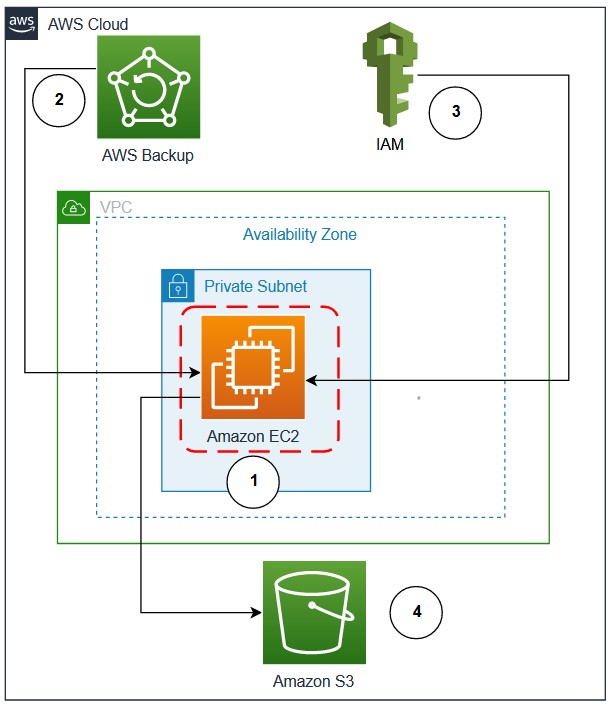AWS Architecture Blog
Category: Amazon Elastic File System (EFS)
AWS Cloud service considerations when modernizing account-per-tenant solutions
An increasing number of software as a service (SaaS) providers are modernizing their architectures to utilize resources more efficiently and reduce operational costs. There are multiple strategies that can be used when refining your multi-tenant architecture. This blog will look at a specific scenario where SaaS providers move from an account-per-tenant to an Amazon Elastic […]
Designing a hybrid AI/ML data access strategy with Amazon SageMaker
Over time, many enterprises have built an on-premises cluster of servers, accumulating data, and then procuring more servers and storage. They often begin their ML journey by experimenting locally on their laptops. Investment in artificial intelligence (AI) is at a different stage in every business organization. Some remain completely on-premises, others are hybrid (both on-premises […]
Deploying IBM Cloud Pak for integration on Red Hat OpenShift Service on AWS
Customers across many industries use IBM integration software, such as IBM MQ, DataPower, API Connect, and App Connect, as the backbone that integrates and orchestrates their business-critical workloads. These customers often tell Amazon Web Services (AWS), they want to migrate their applications to AWS Cloud, as part of their business strategy: to lower costs, gain […]
Deploying IBM Cloud Pak for Data on Red Hat OpenShift Service on AWS
Editor’s note, October 2024: This post is now obsolete. For the latest post, refer to Deploying IBM Cloud Pak for Data on Red Hat OpenShift Service on AWS. Amazon Web Services (AWS) customers who want to deploy and use IBM Cloud Pak for Data (CP4D) on the AWS Cloud, can use Red Hat OpenShift Service […]
Using AWS Backup and Oracle RMAN for backup/restore of Oracle databases on Amazon EC2: Part 2
Customers running Oracle databases on Amazon Elastic Compute Cloud (Amazon EC2) often take database and schema backups using Oracle native tools like Data Pump and Recovery Manager (RMAN) to satisfy data protection, disaster recovery (DR), and compliance requirements. A priority is to reduce backup time as the data grows exponentially and recover sooner in case […]
Using AWS Backup and Oracle RMAN for backup/restore of Oracle databases on Amazon EC2: Part 1
Customers running Oracle databases on Amazon Elastic Compute Cloud (Amazon EC2) often take database and schema backups using Oracle native tools, like Data Pump and Recovery Manager (RMAN), to satisfy data protection, disaster recovery (DR), and compliance requirements. A priority is to reduce backup time as the data grows exponentially and recover sooner in case […]
Disaster recovery approaches for Db2 databases on AWS
As you migrate your critical enterprise workloads from an IBM Db2 on-premises database to the AWS Cloud, it’s critical to have a reliable and effective disaster recovery (DR) strategy. This helps the database applications operate with little or no disruption from unexpected events like a natural disaster. Recovery point objective (RPO), recovery time objective (RTO), […]
Migrate Resources Between AWS Accounts
Have you ever wondered how to move resources between Amazon Web Services (AWS) accounts? You can really view this as a migration of resources. Migrating resources from one AWS account to another may be desired or required due to your business needs. Following are a few scenarios where this may be of benefit: When you […]
Augmenting VMware Cloud on AWS Workloads with Native AWS services
VMware Cloud on AWS allows you to quickly migrate VMware workloads to a VMware-managed Software-Defined Data Center (SDDC) running in the AWS Cloud and extend your on-premises data centers without replatforming or refactoring applications. You can use native AWS services with Virtual Machines (VMs) in the SDDC, to reduce operational overhead and lower your Total […]
Manage your Digital Microscopy Data using OMERO on AWS
The Open Microscopy Environment (OME) consortium develops open-source software and format standards for microscopy data. OME Remote Objects (OMERO) is an open source, image data management platform designed to support digital pathology and cellular biology studies. You can access, share, and work with various biological data. This can include histopathology, high content screening, electron microscopy, […]









